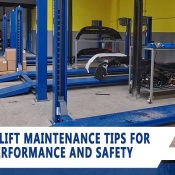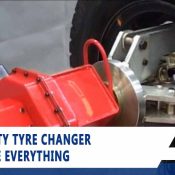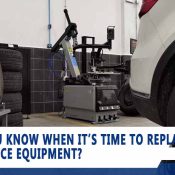
How Do You Know When It’s Time to Replace Your Wheel Service Equipment?
We don’t know of any shop owners who wake up and think, “You know, after I have my morning cup of coffee, I think I’ll drop a load of cash into some new equipment just for the heck of it.” If anything, you’re probably having that cup of joe and thinking, “Man, I hope that old changer holds up just one more day.”
One day it won’t, though. Every piece of tire equipment eventually has its last day. If you don’t replace wheel service equipment before that day, though, the backlog of jobs will make you lose revenue and potentially even customers.
Like wheels themselves, your business needs balance. You don’t want large expenditures when they’re unnecessary, but you also don’t want to wait so long that it fails before you can replace it.
And, it’s not always wear and tear that necessitate a purchase. There’s also the matter of new wheel service equipment that would give your shop more and better opportunities for revenue.
That seems like a lot of variables in terms of when you should pull the trigger on new equipment, but there are really only two questions you need to ask:
How’s your equipment holding up? It’s an obvious question, but if you aren’t doing regular inspections of everything around your shop, you might be surprised at how quickly something can wear out. You may find something as simple as a bolt that needs replacing. Or, you might find something worse.
Is your business growing? If so, your equipment could be holding you back. Upgrades could make your shop more efficient, which would bring in more revenue. If business is really booming, you may even want to consider a new floor plan that would allow more equipment—and a lot more revenue.
Once you’ve answered those, look for needs and opportunities in specific pieces of equipment.
Tire changers
- When it comes to the condition of a tire changer, watch for worn-out shoe sliders, hydraulic seals and pressure bladders.
- Just as importantly, watch for what kinds of wheels are entering your shop. More and more car owners are riding on larger-diameter wheels. If your tire changers are unable to handle these jobs and you’re turning down a lot of volume, it’s probably time to upgrade.
- Then, there’s damaged tires. If you’re not using a good leverless tire changer, there’s a good chance you’ll eventually need to replace a chrome-clad wheel because of metal-on-rim contact. Not with a nice leverless like this one.
Wheel balancers
- If you still have a hand-spun balancer hanging around, you should definitely consider upgrading to electric. The potential to increase your volume is reason enough, but also consider the time and strain you can save your techs.
- Pay close attention to your balancer shaft. A worn shaft can lead to improper balancing and cost your shop’s productivity.
- Diagnostic capabilities are where most balancers have made huge strides over the last several years. Newer, more precise diagnostics can make a huge difference in average balancing time. We recommend a wheel balancer with the most advanced diagnostics possible.
Wheel Alignment systems
- Still using a fixed system? Portable wheel aligner consoles give you more freedom and possibility, because they save you space and don’t require a dedicated bay.
- Software is the key to proper alignment. And the benefit of software is its ability to be updated with the latest data. If your wheel alignment system’s software is limited, so is your shop’s ability to perform those alignments.
Want More Information on Wheel Service Equipment?
Check out these JA resources:
Tire Changer Buyers Guide
Wheel Balancer Buyers Guide
Wheel Alignment Buyers Guide
Shop Equipment Buyers Guide
Car Lifts Buyers Guide




